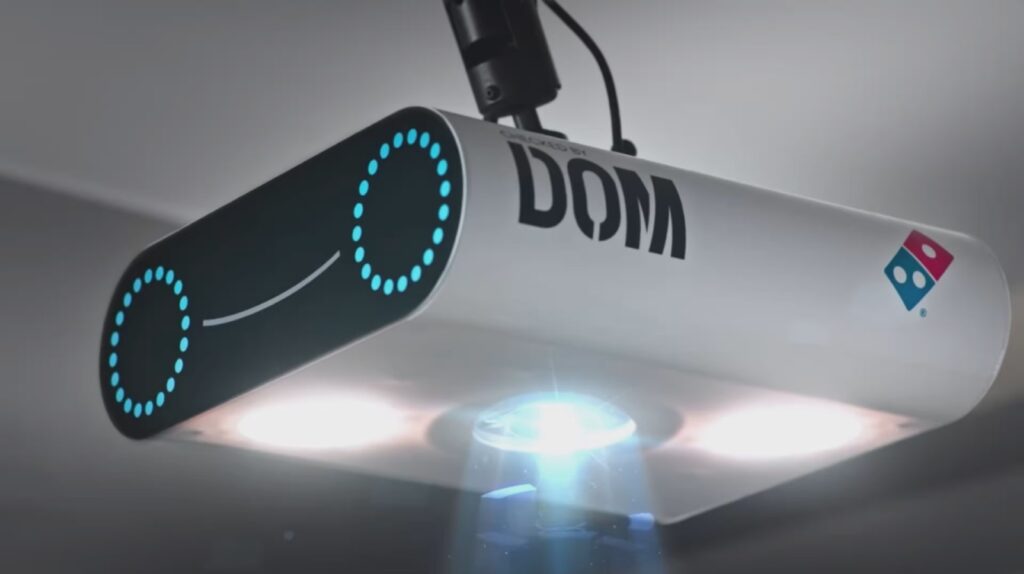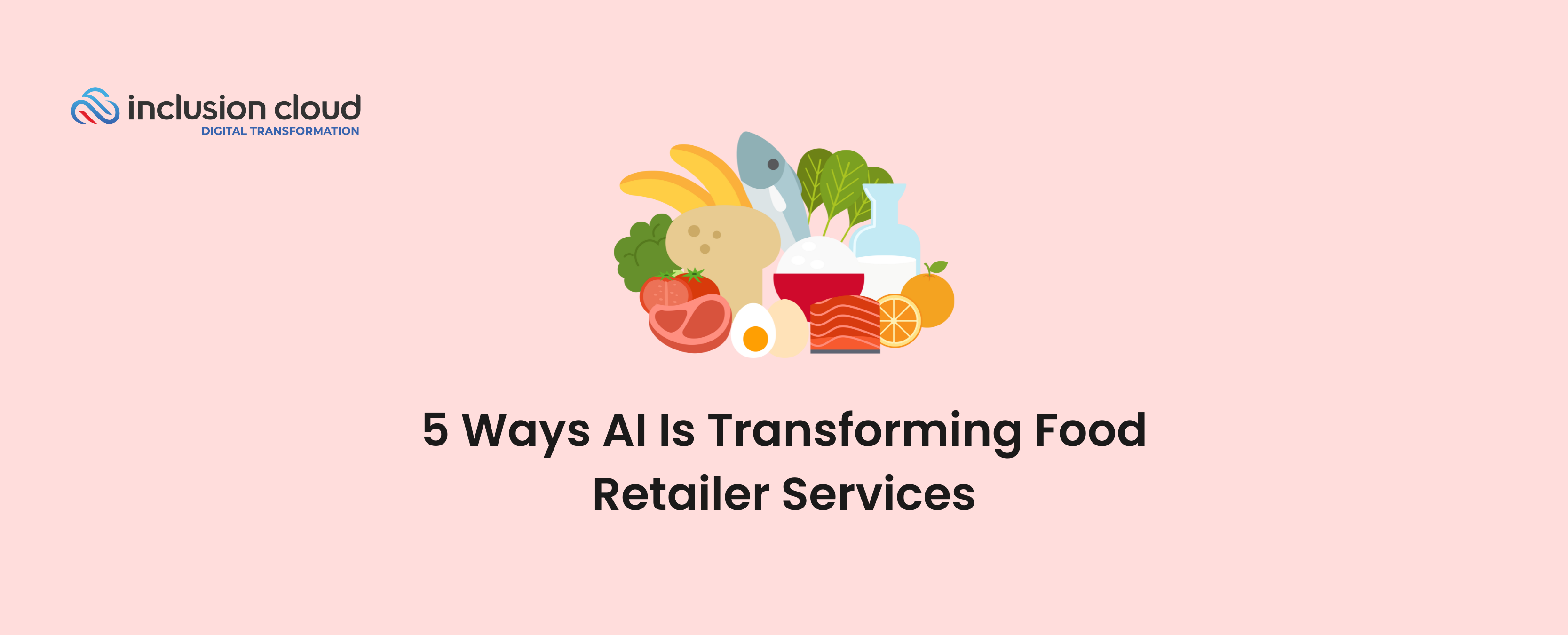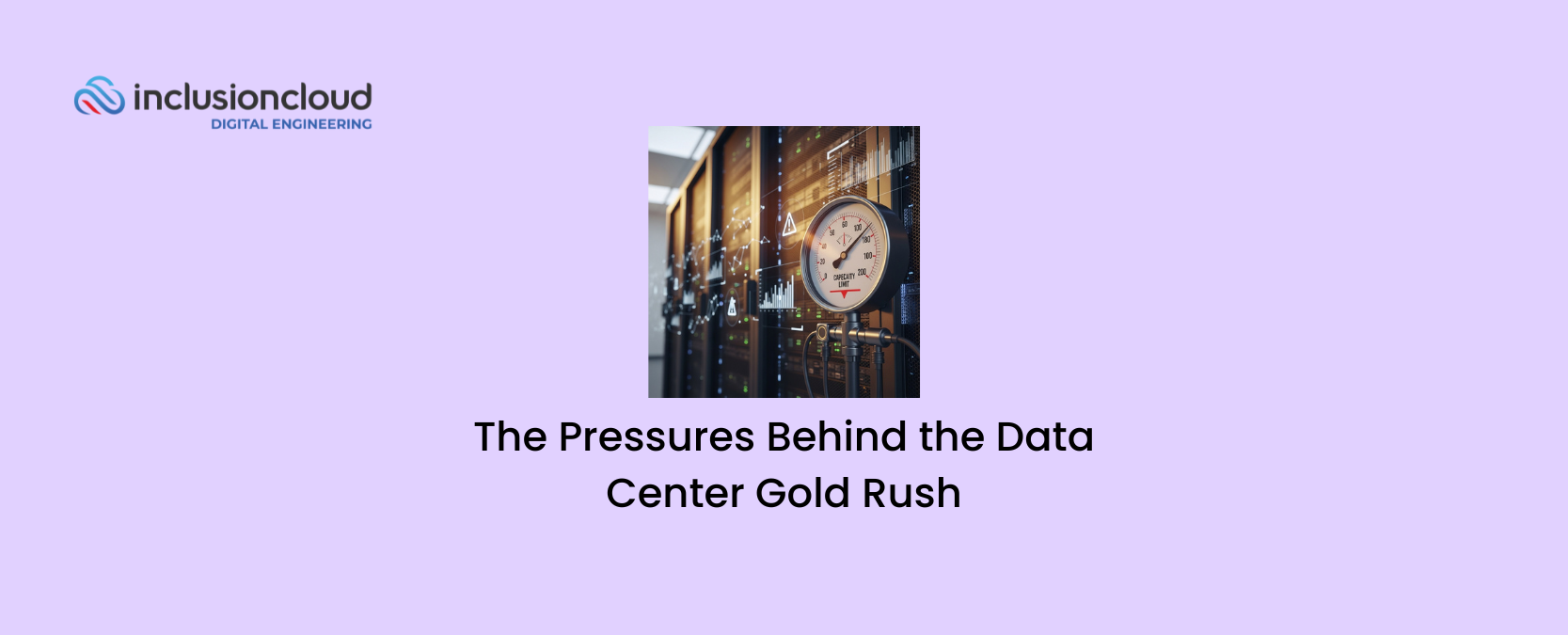The perfect ingredient for the tastiest pizza is AI?
As unconventional as it may sound, the fusion of artificial intelligence (AI) with the culinary world is growing fast and promises to drive exciting changes in food retail services.
If you think that everything in the old art of cooking is already invented, you’re mistaken. Because with the increasing complexity of AI, a whole new world of opportunities opens up to delight palates, but also to make food more nutritious and safe.
But AI isn’t just arriving in the food industry to improve the product itself. It also has the potential to tackle several of the most important social and economic challenges:
With the help of AI, cloud, and data analytics, food restaurant chains can improve the efficiency of their supply chains. In this way, crop production can be increased through image recognition technology, ingredient waste can be greatly reduced through demand prediction and interconnection with smart devices such as refrigerators and others, and the purchase of necessary ingredients and products can be automated.
But there are also great opportunities to take advantage of surplus food and help those in need.
But the supply chain will not only bring benefits to restaurant chains. It can also help save money at home and waste less food.

That’s not it. Customer satisfaction will be positively impacted by AI in two central aspects:
On the one hand, this technology is helping chains like Pizza Hut offer more standardized and very high-quality products, ensuring that all products meet customer expectations.
On the other hand, AI is also essential for determining the best route to deliver food to the customer’s table faster, as well as testing drone delivery that can bring you steaming hot food, avoiding getting stuck in traffic jams or delaying delivery because of errors in street navigation.
Join us in continuing to unravel how AI is transforming the food retail industry in a multitude of ways.
Our palates thank you.
5 Ways AI Can Help Food Retailers
Let’s get straight to the point. Here’s a glimpse at five ways AI is the secret ingredient in the transformation of the food retail industry. AI isn’t just streamlining processes anymore, it’s becoming the key to success, from keeping shelves stocked with customer favorites to whipping up personalized recipe recommendations.
1. New Flavors and Recipes
Ever wondered how food brands create those tantalizing new flavors that grace your grocery store shelves?
Traditionally, creating new flavors for food brands and retailers is a meticulous process that demands a significant amount of manual work and time. Food companies often rely on teams of experts, including chefs, food scientists, and flavor chemists, to develop innovative flavor profiles that resonate with consumers. These teams experiment with different combinations of ingredients, adjust seasoning ratios, and conduct taste tests to refine the flavor profiles until they achieve the desired taste.
While the process of creating new flavors has traditionally been labor-intensive and time-consuming, advancements in technology, particularly AI-driven solutions, are revolutionizing this aspect of the food industry.
AI-powered algorithms can analyze vast amounts of data, including consumer preferences, market trends, and ingredient properties, to generate innovative flavor combinations more efficiently and effectively. This technology streamlines the flavor development process, reduces the need for manual labor, and accelerates the time-to-market for new products.
There are numerous recent examples of companies utilizing AI to create original flavors and launch new products into the market. For instance, Coca-Cola introduced a limited-edition flavor called Y3000, developed in collaboration with AI, with the concept of how AI envisions the taste of Coke in the year 3000. Also, the visual identity of the can was designed by AI.
McCormick, the herbs and spice brand, has partnered with IBM on a platform that analyzes over 40 years of flavor data using AI and machine learning. This initiative, called “ONE,” aims to create new flavor combinations with unprecedented efficiency.
The recipe-predicting AI draws on “hundreds of millions” of sensory data points and human flavor palettes, producing innovative flavors like Tuscan chicken, bourbon pork tenderloin, and New Orleans sausage. Moreover, McCormick’s AI program predicted a Japanese sesame blend called gomasio to become a trending spice for pasta or roasted vegetables, showcasing the power of AI in anticipating culinary trends.
Beyond these products, several innovative startups are pushing the boundaries of AI-powered flavor creation:
- Osmo: Co-founded by researchers from Google and The Monell Chemical Senses Center, Osmo boasts AI software that can identify the flavor and aroma of any substance based on its chemical structure. This opens doors for entirely new flavor creations that were previously unimaginable.
- Food pairing: This is another innovative company using AI to create new fusions of flavors. By analyzing the aromatic molecules released by food, their AI suggests appealing flavor combinations based on shared aroma profiles, like pairing strawberries with parmesan, highlighting how AI can contribute to creative and unexpected culinary experiences.
- Analytical Flavor Systems: Uses the Gastrograph app, which collects flavor data from users and professional tasters. This app aids in predicting flavor preferences and market trends, allowing for more tailored and appealing food products.
These are just a few examples, and the use of AI in flavor creation is a rapidly growing trend with the power to create innovative and delicious new flavors that captivate our taste buds.
2. Quality Control and Food Safety
In this crucial sector that aims to preserve public health, AI holds great potential to maintain high standards of quality for all the food we place on our tables.
Here, AI is combined with another powerful technology such as image recognition algorithms that can identify the condition of food at various stages of the supply chain, from the growing stage to when prepared food leaves the kitchen for the consumer’s plate. This technology has the ability to inspect different aspects and attributes of the food: color, size, shape, overall condition, and whether it is fit for consumption, among others.
Domino’s, the pizza chain, was one of the pioneers in applying this image recognition technology in 2019, creating the DOM Pizza Checker scanner. The pizza is placed under the scanner before it goes to the delivery person, and the system checks the condition of the product. The AI recognizes, analyzes, categorizes, and even grades the pizza, comparing the image with vast datasets of correct pizzas. From there, it is determined whether the pizza meets the quality to reach the customer’s hands or not.

At InclusionCloud, we have worked on several similar projects but aimed at the initial stage of food production. We work with a leading tequila production company and a global frozen food company.
In the first case, we helped create a system to recognize the status of agave plants, using drones equipped with image recognition. The results were truly impressive: we achieved a 35% cost savings on irrigation and pesticides and automated the laborious manual process of crop inspection.
In the second case, the use of drones enabled us to reach inaccessible areas, simplifying the collection of crucial agricultural data. The use of image recognition technology, integrated with our drone solutions, was pivotal in enhancing the quality of their food products. This advanced technology worked by capturing high-resolution images of crops with drones, which were then analyzed to assess crop health, planting density, and moisture levels. This precise analysis enabled targeted interventions in irrigation and fertilization, ensuring optimal growth conditions and sustainable farming practices.

Undoubtedly, this technology has a great opportunity to establish new levels of quality and food safety throughout the entire production process. If you want to learn more about image recognition and the way machines perceive, we recommend reading this blog: Image Recognition: Revolutionizing Manufacturing, Transport, and Medical Diagnoses
3. Reduce Waste with Inventory Management
One of the most pressing challenges for AI is to enhance the efficiency of global food chain management. According to the UN, the fact that 1 in every 10 people goes hungry while almost 1.3 billion tons of food annually are wasted signals an urgent need for change.
Let’s look at some statistics:
- Globally, approximately 1.3 billion tons of food is wasted annually, about one-third of all the food we produce.
- In the U.S., 30-40% of produced food ends up in landfills, as per the USDA.
- Food waste is a major contributor to climate change, generating an estimated 8-10% of global greenhouse gas emissions.
- 13 percent of the world’s annual food waste occurs in retail establishments and the food service industry.
These data points make us think, is there a better way to manage food? While it’s a complex problem with many facets, AI may be one of the answers. Thanks to this technology’s ability to analyze patterns from large amounts of data, automate processes, make predictions, and integrate with smart devices, many parts of the supply chain process can be improved and food waste reduced.
Here are a few examples:
A South Korean startup, Nuvilab, developed a 3D scanner that analyzes consumption habits in restaurants, schools, and cafeterias by examining leftovers on plates to adjust portions and avoid waste. This also helps better understand consumer preferences and identify which dishes or ingredients are frequently left uneaten.
Another example is the platform created by the startup Whisk, which was acquired by Samsung and renamed Samsung Food. The first thing it does is make recipes ‘shoppable’ by matching ingredients with products at grocery stores. This ensures you never buy too much or too little, maintaining the freshness of the ingredients and preventing them from occupying space in storage or, in the case of fruits and vegetables, from spoiling.
A great advantage of these platforms for retailers is that they can connect with other smart devices such as refrigerators, ovens, inventory management software, digital menus, and POS systems. This creates an interconnected ecosystem where data flows to achieve more efficient and seasonally connected food management, aligning with customer preferences and minimizing waste.
Of course, AI alone cannot solve this problem, but it is a good start. To this technological infrastructure, of course, must be added awareness among people to collectively tackle the issue of waste and help combat hunger worldwide.
4. Advertising Created with AI
AI has already been established as a fundamental tool for creating digital content and various marketing efforts. In the food industry, several brands have taken the step forward and launched advertising campaigns, significantly speeding up the time it takes to create a piece or campaign:
Domino’s in Europe launched a Twitter campaign using generative AI (they used Midjourney) to create images of the product with different toppings representing various countries around the world with their traditional ingredients, such as the paella pizza typical of Spain:

Generative AI is a very powerful tool for various tasks. One of them is the generation of product images, which traditionally is a task that requires multiple steps and can take several days.
It requires hiring a photographer, specialists to prepare the product for the session, high-quality camera equipment, and someone to handle the planning, logistics, and then the editing. Generative AI has great potential to create hyperrealist images in a matter of seconds that could perfectly come from a photo session with experts.

Another tool, still in development, is video generation through tools like Runway ML, Midjourney, Synthesia, or Invideo AI.
This technology is still in its early stages, so the results are not yet ideal. For example, this commercial made entirely by AI (from the script to the animation) for a fictitious pizzeria. I know, it’s a bit strange and even terrifying, but it still grabs my attention that it was made in just 3 hours.
Imagine what will be possible soon when AI models continue to be refined and improved (especially when Sora becomes available, as it is generating great anticipation with its impressive trailers).
But synthetic content generation isn’t the only utility of AI. It can also be used to refine messaging in email campaigns, analyze customer preference data, and send offers that may seem attractive, as well as use chatbots to respond to inquiries or provide some original content:
For example, Maggi, a brand from Nestlé specializing in instant soups, broths, ketchups, and instant noodles, created KiM, a chatbot that teaches you how to cook, makes suggestions, and offers tips to improve recipes.
5. Supply Chain Optimization
As mentioned earlier, there are many areas in the food production and distribution supply chain that can benefit from the improvements that AI can bring.
From crop monitoring and smart inventory management to food preparation in the kitchen and ultimately reaching the consumer’s plate, there’s a lot that AI can do to make each point more efficient.
AI algorithms can analyze sales data, weather forecasts, and seasonal trends to accurately predict customer demand. For example, McDonald’s utilizes AI to forecast demand for specific menu items at different locations, optimizing inventory levels.
Pizza Hut, KFC, and Taco Bell are taking a comprehensive approach to implementing new technologies in their business model. They are piloting a chatbot called “SuperApp” for employees, which provides quick and easy assistance in menu item preparation. But they also plan to integrate AI-generated voice for drive-thru assistance and use the “SuperApp” as a “pocket manager,” assisting in decisions typically made by humans regarding oven temperature settings, shift organization, and ingredient purchasing. The aim is to reduce human error and enhance the overall restaurant experience through AI’s predictive capabilities.
Another area for supply chain improvement is delivery. Some brands are beginning to experiment with food delivery via drones or ground robots equipped with image recognition and AI, capable of selecting optimal routes and reducing delivery times. This will also improve overall food conditions and customer experience. For instance, Just Eat claims to have conducted the world’s first online food delivery using a self-driving robot as part of a pilot with Starship Technologies in London.
Undoubtedly, AI has a disruptive potential to elevate every part of the food supply chain to new levels. While some of these improvements are still in the testing phase, there’s no doubt that they will become essential aspects of every restaurant or food retail operation soon.
Conclusion
Cooking is undoubtedly a millennia-old art, evolving alongside the cultures and technologies of different eras.
However, in today’s landscape, satisfying customers and meeting stringent quality standards require more than traditional recipes and culinary skills alone. With the powerful tool of AI at our disposal, we cannot afford to approach food production and distribution the same way as in previous decades.
AI offers unprecedented opportunities to enhance every aspect of the food supply chain, from ingredient sourcing to the final dish served to the customer. By leveraging AI algorithms, food chains can optimize supply chains, reduce waste, ensure food safety, and even create innovative flavors that captivate the palate. Embracing AI in the food industry isn’t just about keeping up with the times—it’s about revolutionizing the way we think about food.
In a world facing pressing challenges such as hunger, sustainability, and environmental change, AI appears as a powerful ally in addressing these issues. By harnessing the capabilities of AI, we can work toward building a more efficient, sustainable, and resilient food system that meets the needs of both present and future generations.
Follow us on LinkedIn for more insights on how AI is transforming the food industry and shaping the future of food retail.





